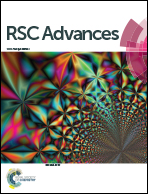Simulation study and experiment verification of the creep mechanism of a nickel-based single crystal superalloy obtained from microstructural evolution
Abstract
Molecular dynamics (MD) simulations and experiments were used to understand the creep properties and microstructural evolution of a nickel-based single crystal superalloy. By observing the microstructural evolution using MD simulations, we have found a P-type rafting in the [001] crystal orientation owing to dislocations cutting into the γ′ phase. The deflected γ phases lead to an L-type rafting, indicating it is an inferior creep property in the [011] crystal orientation. Unlike the [001] and [011] crystal orientations, dislocations climb over to the γ′ phase without rafting in the [111] crystal orientation, which manifests a superior creep property. In addition, by comparing the effect between temperature and stress on the creep properties, the results suggest that the creep of the [111] crystal orientation was strongly influenced by stress, whereas the creep properties of the [001] and [011] crystal orientations were significantly affected by temperature. Furthermore, the experimental results are consistent with the MD simulations. This study provides fundamental guidance for the rational design and testing of nickel base single crystal superalloy for structural applications.


 Please wait while we load your content...
Please wait while we load your content...